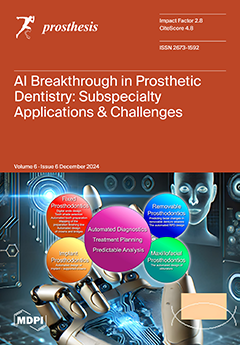Background: Flatfoot deformity is a common condition in children and teenagers that may increase the risk of knee, hip, and back pain. Most of the insoles suggested to treat flatfoot symptoms are not designed to adapt to foot temperature during walking, and they
[...] Read more.
Background: Flatfoot deformity is a common condition in children and teenagers that may increase the risk of knee, hip, and back pain. Most of the insoles suggested to treat flatfoot symptoms are not designed to adapt to foot temperature during walking, and they are either too soft to provide support or hard enough to be uncomfortable.
Purpose: This study aims to develop an advanced solution to diagnose and treat flexible flatfoot (FFT) using infrared thermography measurements and a hybrid insole reinforced by nitinol (NiTiCu) smart-memory-alloy wires (SMAWs), this super-elastic alloy can return back to its pre-deformed shape when heated, which helps to reduce the local high-temperature points caused by the uneven pressure of FFT. This approach achieves a more uniform thermal distribution across the foot, which makes the hybrid insole more comfortable.
Methods: The study involved 16 subjects, divided into two groups of eight flat-footed and eight normal. The procedure includes two parts, namely, designing a prototype insole with SMAW properties based on thermography measurement by using SolidWorks, and evaluating this design using Ansys. Second, a hybrid insole reinforced with SMAWs is customized for flatfoot subjects. The thermography measurement differences between the medial and lateral sides of the metatarsophalangeal line are compared for the normal and flatfoot groups before and after wearing the suggested design.
Results: The results show that our approach safely diagnosed FFT and significantly improved the thermal distribution in FFT subjects by more than 80% after wearing the suggested design. A paired
t-test reported significant (
p-value > 0.001) thermal decreases in the high-temperature points after using the SMAW insole, which was closely approximated to the normal subjects.
Conclusions: the SMAW-reinforced insole is comfortable and suitable for treating FFT deformity, and infrared thermography is an effective tool to evaluate FFT deformity.
Full article





